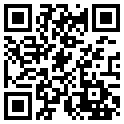The popularity of QR codes has increased dramatically over the past year. As darkreading puts it, “The success behind QR code usage among mobile fans has largely been pinned on its simplicity.” QR codes are a simple and interesting way to direct a smart phone user to websites, apps and files. But be warned, with the simplicity comes risk.
“In the simplest of terms, a QR code is a 2D barcode that can store data which can then be read by smart phone users. The data is an easy way to direct a user to a particular website with a simple scan of the QR code, but it could also just as easily be a link to a malicious website.”
To read a QR code, a smartphone user needs only to open a barcode reader app, use the phone’s camera to scan the code, and let the reader do the work. The main concern? Where the QR code leads you once scanned. A malicious source could easily direct a user to a fake bank or website that downloads potential viruses onto the user’s phone.
While QR codes tend to pique curiosity, users need to be constantly aware of the programs they’re opening and links they are viewing. The best advice is to use a reputable QR code reader app that allows for user determination of the action taken after scanning the code. If the link or file looks suspicious from the app, it is best to just avoid it.


